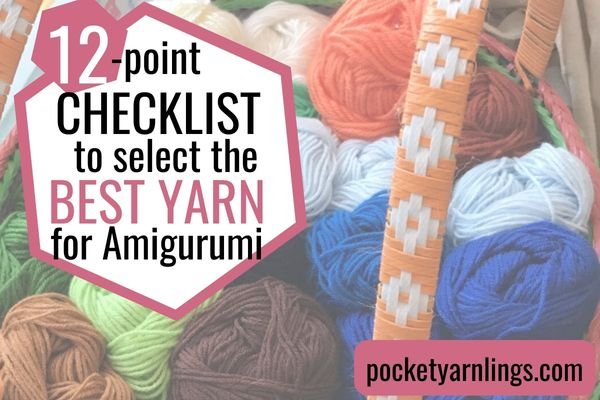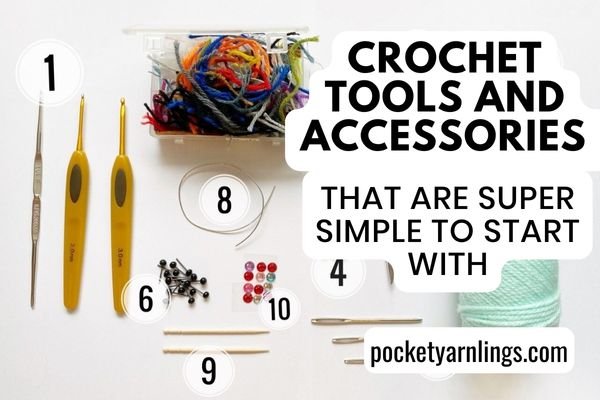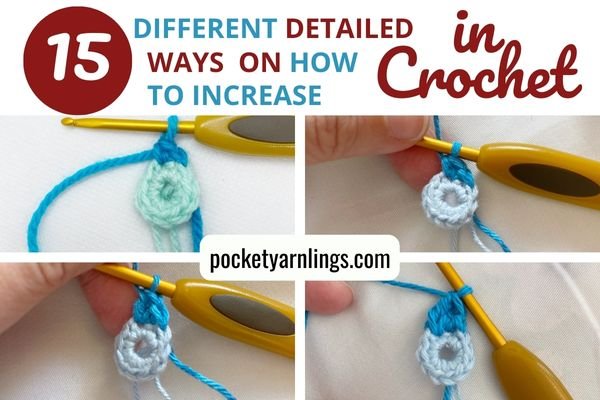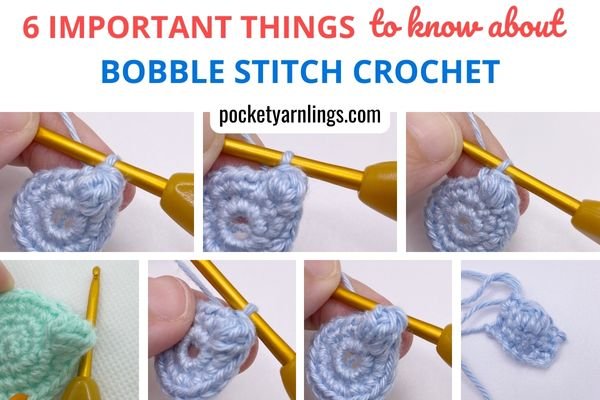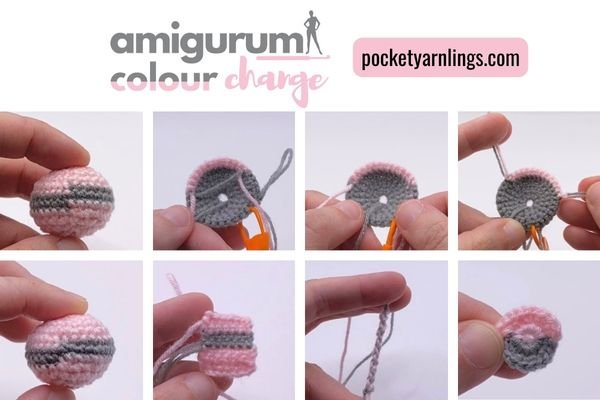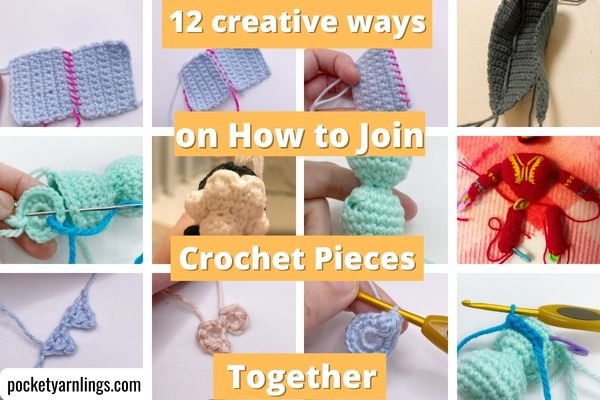How to Crochet an Animal Body for Beginners
Crafting animal bodies in crochet adds personality and charm to amigurumi creations. Mastering different construction techniques through shaping, body styling and detailing can open up a world of creative possibilities for your animal amigurumi.
Table of Contents Show
Introduction of Animal Bodies
We will first start off with the necessary materials and tools you need to get started, then work on basic 3D shapes for the animal bodies, then work on more advanced techniques like different styles and detailing. Hopefully those these series of suggestions, it can spark your imagination to customize and personalize your very own animal crochet projects!
Materials and Tools for Crocheting Animal Bodies
Let us first talk about what are the necessary materials and tools you need to crochet your animal amigurumi body. Firstly, consider the yarn types and colours before getting started, have the usual crochet tools ready and do not forget those specifically meant for amigurumi like stuffing.
Yarn Types and Colours
Yarn Weight: Choose yarn weights suitable for the desired body size; for smaller animals, use finer weights (e.g., sport, DK), and for larger ones like plushie toys, opt for worsted or bulky weights.
Fibre Type: Acrylic yarn is commonly used for its durability and ease of maintenance. Cotton yarn provides a smoother finish and is suitable for detailed designs and also for child play. Specialty yarns like mohair or wool blends can add texture to simulate fur or specific animal characteristics.
Colour Palette: Select appropriate colours based on the animal being crafted. Consider natural animal colours for realistic creations or playful, vibrant hues for fantasy creatures. Remember to factor in the colour changes when constructing the body, which can be in the crochet pattern itself or as detailing after the whole body is completed.
Stuffing Materials
Polyester Fiberfill: This is the most common stuffing material for amigurumi due to its affordability, washability, and ability to hold shapes well.
Wool Roving: Offers a denser stuffing option, ideal for larger or more structured animals, providing firmness and support. You can consider using this for plushies!
Crochet Tools and Accessories
Crochet Hooks: A set of appropriate-sized crochet hooks for the selected yarn weight. Choose a set of ergonomic hooks so that you do not injure your wrists with your amigurumi project.
Yarn Needles: Needles for yarn threading facilitate sewing body parts together, especially later on when you have to sew the head and the limbs onto the animal body.
Stitch Markers: Useful for marking rounds or specific points in the body to maintain symmetry and proper shaping.
Selecting suitable materials and tools not only affects the appearance but also impacts the durability and final look of the amigurumi. The right combination ensures a smooth crafting process and allows for greater creativity in achieving desired body shapes, textures, and appearances for various animal creations. For more ideas on what other tools you need for amigurumi in general, check out “My Crochet Tools and Accessories that are Super Simple to Start With”.
Free Animal Shaping Starter Guide
Crocheting Basic Animal Body Shapes
Creating basic body shapes in amigurumi involves fundamental crochet techniques and easier 3D shapes to crochet as well. Here I will be going through the most basic forms of crochet animal body shapes that are easy to create – spheres and cylinders. There are more complex forms of shaping involves contours and musculature but for the purposes of staying basic here, we will only be going through these 2 shapes and some relevant short patterns will be included as well.
Spherical Animal Body
One of the easiest ways to start off with crocheting animal bodies, you could crochet the head and body separately and then sew them together. On the other hand, you could crochet a spherical head and then continue into the body by way of decrease in stitches from the head and then increase in stitches when entering the body. Here we will just be talking about the animal body.
Start: Begin with a magic ring or adjustable loop. Crochet single crochet (sc) stitches into the ring.
Increase Rounds: Increase by working increases (2 sc in each stitch) in the second round.
Body Rounds: Crochet additional rounds without increasing to maintain the diameter of the sphere. Adjust the number of rounds as needed based on the desired size.
Closing the Sphere: Finish by decreasing evenly in each round to close the sphere. Use a yarn needle to close the remaining gap neatly.
Spherical Animal Body Pattern
Round 1: Magic ring sc10 – 10st
Round 2: 2sc10 – 20st
Round 3: Sc20 – 20st
Round 4-6: Repeat Round 3 – 20st
Round 7: Sc2tog10 – 10st
Close up in front loops only (FLO) and fasten off.
For more ideas on how to customize different types of 3D spheres, check out this comprehensive post, “Mastering Crochet Balls: Step-by-Step Guide for Creating Perfect Spheres”.
Cylindrical Animal Body
Another way of looking at a cylindrical animal body is a tube shape. Here we talk about the steps involved before moving onto a short pattern. The pattern example below has some slight shaping to it, meaning the initial part of the cylinder is slightly wider and then subsequently narrows a bit, rather than just being a uniform cylinder. You can see how it turns out for the body of the final dog amigurumi.
Start: Begin with a magic ring or adjustable loop. Crochet single crochet (sc) stitches into the ring.
Increase Rounds: Increase by working increases (2 sc in each stitch) in the second round.
Further Increase Rounds: Depending on how wide you want the cylinder to be, you can continue increasing the diameter of subsequent rounds by working increases in longer intervals - (2 sc in alternate stitches) and so forth.
Body Rounds: Crochet additional rounds without increasing to maintain the diameter of the cylinder or tube. Adjust the number of rounds as needed based on the desired length of the final tube.
Closing the Cylinder: Finish by decreasing evenly in each round to close the cylinder. This should correspond to the increase in rounds and further increase in rounds mentioned earlier, but this time decreases instead. Use a yarn needle to close the remaining gap neatly.
Cylindrical Animal Body Pattern
Round 1: Magic ring sc6 – 6st
Round 2: 2sc6 – 12st
Round 3: Sc12 – 12st
Round 4: (Sc3, 2sc1) x 3 – 15st
Round 5: Sc15 – 15st
Round 6-7: Repeat round 5 – 15st
Round 8: (Sc3, sc2tog1) x 3 – 12st
Round 9: Sc12 – 12st
Round 10: (Sc3, sc2tog1) x 2, sc2 – 10st
Round 11: Sc10 – 10st
Round 12: Repeat round 11 – 10st
Round 13: (Sc1, 2sc1) x 5 – 15st
Round 14: Sc15 – 15st
Round 15: (Sc1, sc2tog1) x 5 – 10st
Round 16: Sc2tog5 – 5st
Close up in front loops only (FLO) and fasten off.
For more ideas on how to customize different types of 3D cylinders, check out this comprehensive post, “How to Crochet a Tube in 10 different useful styles”.
Tips for Crocheting Animal Body Shapes
Maintain Tension: Keep tension consistent throughout to ensure a uniform appearance in the body shape.
Shaping: Use increases and decreases strategically for shaping spheres or tapered ends in tubes. This process is slightly more advanced than doing the standard spherical and cylindrical shapes.
Stuffing: Stuff the body firmly but not overly tight to retain the desired shape. Add stuffing gradually as you progress.
Stitch Count: Count stitches regularly to ensure the correct number of stitches per round or row, maintaining symmetry.
Practicing these techniques will help in creating various basic body shapes for amigurumi, offering versatility in crafting different animals or characters.
Specific Body Styles for Different Animals
Now that we have gone through the basic animal body shapes, here we are talking more about body styles. This includes postures and positions of animal bodies, like for instance whether they are vertical or horizontal. These considerations also correlate with whether the animal amigurumi you intend to crochet is bipedal or quadripedal. Think about these before starting on the project because it will have a bearing on limb attachment later on as well.
Crafting specific body styles for various animal species in amigurumi involves understanding their anatomical features and employing suitable crochet techniques:
Bipedal Animals: Animals standing on two legs, such as penguins or certain birds, may require a vertical posture. Craft a spherical or cylindrical body with attachments positioned vertically to support the animal's upright stance.
Quadripedal Animals: For creatures like dogs, cats, or bears that walk on all fours, a horizontal body attachment to the head works best. Shape the body into a cylindrical or spherical form, ensuring the legs are evenly spaced for stability and balance.
Birds: Birds often have more elongated bodies with a cylindrical or tapered shape. Crochet a slim cylindrical body or a tapered shape that gradually narrows toward the tail. Incorporate wings if needed, attaching them appropriately to the sides.
Aquatic Animals: Creatures like fish or dolphins may feature elongated cylindrical bodies. Create a cylindrical body shape and add fins or tail as needed to mimic the specific aquatic creature's appearance.
Employing techniques such as crocheting in rounds or rows to form the desired body shapes and strategically attaching limbs or appendages allows for the creation of lifelike and anatomically accurate amigurumi animals. Adjusting the posture, shape, and attachment methods ensures that the body structure complements the specific animal species you aim to replicate.
Shaping and Detailing of Crochet Animal Bodies
Having gone through the basic 3D shapes to crochet for animal bodies and also taking into consideration the posture of the amigurumi, here are some more advanced levels of shaping and detailing to make your animal body even more realistic! Here are some ideas to consider once you have gotten the hang of crocheting a basic animal body, when you are ready to do more customization and personalization of your crochet project!
Shaping
Increases and Decreases: Use increases (adding stitches) and decreases (removing stitches) strategically to shape body curves, limbs, tails, or other features. Increasing rounds can create a broader shape, while decreasing rounds sculpt narrower sections or tapering, mimicking anatomical forms. (Just like what I subtly did for the dog example above.)
Check out more about increases in stitches here at “15 different detailed Ways on How to Increase in Crochet”. Also check out more about decreases in stitches here at “15 different detailed Ways on How to Decrease in Crochet”.
Textured Stitches: Experiment with textured stitches like popcorn stitches, bobble stitches, or front/back post stitches to add depth and dimension to the body. These stitches create raised or textured surfaces, ideal for replicating scales, fur, or unique skin textures of certain animals.
Here are some examples of textured stitches to try out for your animal body detailing:
5 Fundamental Things to know about Puff Stitch Crochet
8 Atypical Things about How to Crochet Cluster Stitch
8 Basic Tips on How to Crochet a Picot Stitch
6 unmissable steps on How to do a Popcorn Stitch in Crochet
6 important things to know about Bobble Stitch Crochet
Attachment of Limbs and Tails: Ensure proper attachment of limbs or tails to the body using secure sewing techniques. Align the placement correctly and reinforce the attachment with multiple stitches to maintain stability. I will talk more about this later on in this article, but remember to take this into consideration when shaping the body because you would have to make allowances for the limb attachments.
Detailing
Colour Changes: Incorporate colour changes within rounds or rows to create patterns, stripes, or markings that resemble the animal's natural coloration. This technique adds visual interest and detail to the body, enhancing its realism.
Consider checking out this article on “12 Nifty Types of Colour Changes in Amigurumi Crochet” for more ideas on different types of colour changes in amigurumi.
Surface Crochet: Utilize surface crochet techniques to add fine details or lines on the body's surface. This method involves crocheting on the surface of the fabric, allowing for precise detailing such as creating facial features, fur lines, or defining body contours.
Get more information on surface crocheting technique in this detailed article on “12 creative ways on How to Join Crochet Pieces Together”.
By implementing these techniques, crocheters can achieve intricate details, lifelike shapes, and textures on amigurumi animal bodies, resulting in captivating and realistic creations. Adjusting these methods allows for customization to match specific animal characteristics and features.
Tips for Attaching Animal Body Parts
When assembling body parts to the head in amigurumi, follow these tips for a seamless and secure attachment:
Alignment: Ensure proper alignment of body parts to the head and limbs by using stitch markers or pins to position them before sewing. This ensures symmetry and desired positioning.
Secure Stitching: Use a yarn needle and matching yarn to sew the body parts to the head. Employ a whip stitch or invisible seam technique for a secure yet hidden attachment.
As for a breakdown on all the different ways you can sew pieces together, whether flat or 3D pieces, whether open or closed amigurumi pieces, remember to check out this comprehensive post on “12 creative ways on How to Join Crochet Pieces Together”.
Reinforcement: Make multiple passes with the yarn and needle around the joining area to reinforce the attachment. This provides stability and prevents the body parts from loosening over time.
Invisible Seams: Sew body parts in a way that minimizes visible seams. Match yarn colours and strategically place stitches in natural lines or creases to conceal joins effectively.
Consistency in Tension: Maintain consistent tension while sewing to ensure that the stitches neither pull too tightly nor create loose gaps, resulting in a smooth and uniform finish.
Weaving Ends: After securing the attachment, weave in the yarn ends neatly inside the amigurumi to hide them, ensuring a clean and polished appearance.
If you need some help on finishing up the project and weaving in the ends, then also remember to check out this post on “The 3 quick systematic steps involved in How to End a Crochet Project”.
By implementing these techniques, you can achieve a seamless and professional-looking assembly of body parts to the head, enhancing the overall aesthetics of your amigurumi creations.
Conclusion of Crocheting Animal Bodies
Crocheting animal bodies is just one component of the whole animal amigurumi shaping experience. Within just this component of crocheting, you can customize the shapes, the styles, the posture, detailing so as to achieve a distinctive look for your animal crochet project.
Couple that together with shaping the animal limbs and their facial features and you can breathe life into these handcrafted gifts! I hope this article has given you some ideas to get started with and do not forget to check out all the other related Animal Shaping resources on my blog! Pin the image above if you found this post useful!



